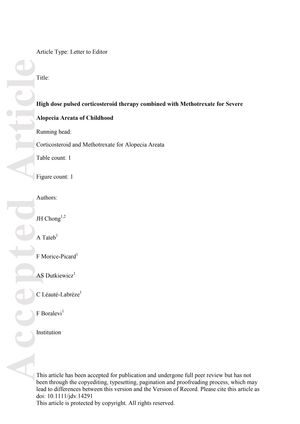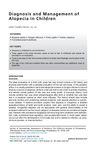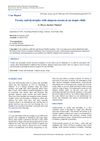High-Dose Pulsed Corticosteroid Therapy Combined with Methotrexate for Severe Alopecia Areata in Childhood

TLDR High-dose corticosteroids and methotrexate had a modest effect on severe childhood alopecia, but side effects and relapse were concerns.
The document reports on a study conducted from 2010 to 2015 involving 14 pediatric patients with severe alopecia areata (AA), specifically alopecia totalis (AAT) and universalis (AAU), who had not responded to topical therapy. These patients were treated with a combination of high-dose pulsed corticosteroid therapy (HDPCT) and methotrexate (MTX). The treatment consisted of 3 days of intravenous methylprednisolone at 10 mg/kg/day for 3 consecutive months, followed by MTX at 0.2 mg/kg/day. Hair regrowth was evaluated by two dermatologists using a scoring system, and good responders were defined as those with more than 50% hair regrowth. Out of the 14 patients, 6 were considered good responders, all of whom showed a response by 6 months of treatment. Two of these good responders maintained their results for 6 months to 2 years after stopping MTX. The study found that HDPCT combined with MTX showed a modest response in pediatric AAT and AAU, and 8 out of the 14 patients required psychiatric consultations due to significant depression associated with AA. The study suggests that HDPCT:MTX could be considered for children with severe AA after topical treatments have failed, but it emphasizes the importance of monitoring for side effects and finding the lowest effective dose of MTX, as long-term effects in children are not well studied. The study also notes that even with hair regrowth, relapse is common, with only a minority achieving long-term response.



